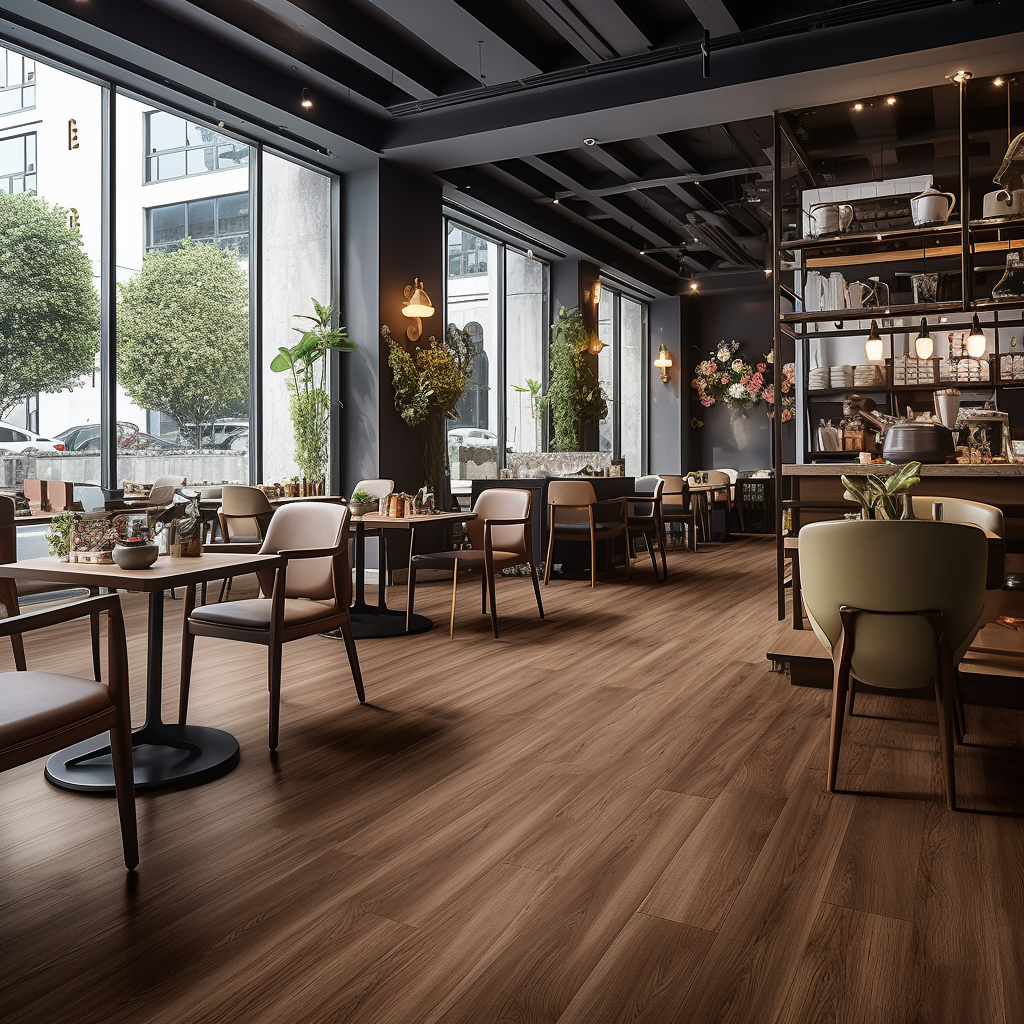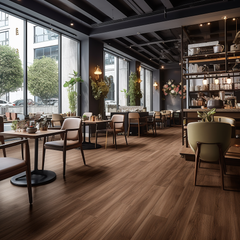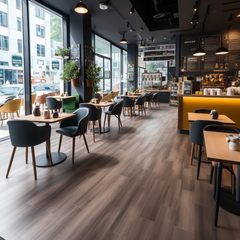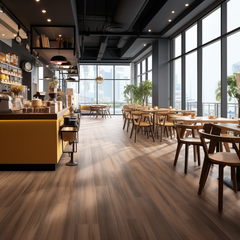







High Quality 100% PVC Vinyl Plank Stickers Glue Wood Waterproof Tile LVT Vinyl Floor Plank Self Adhesive Flooring
无法加载取货服务可用情况
描述
xProduct Data Sheet
| Product Name | LVT Flooring |
| Color | Accept Customization |
| Overall Thickness | 1.5mm, 2mm, 2.5mm, 3.0mm, 4.0mm, 5.0mm or upon request |
| Wear Layer Thickness | 0.07mm, 0.1mm, 0.2mm, 0.3mm, 0.55mm, 0.7mm |
| Surface Texture | Wood grain, Light wood grain, handscraped, EIR, Stone, Leather, Marble, Carpet |
| Finish | UV (Matt, semi-matt, light) |
| Paving Method | Click System, Dry back, Self adhesive, Loose lay |
| Size | 6"×36"/6"×48"/7"×48" |
| Useage | Bedroom, Kitchen, Basements, Home, School, Hospital, Mall, Commercial to use. |
| Features | Waterproof, Wear resistant, Anti-slip, Moisture Proof, Fire resistant,durable, anti-scratch, anti-bacterail. |




Sustainable Solutions: Embracing the Environmental Benefits of LVT Flooring
Luxury Vinyl Tile (LVT) flooring has emerged as a sustainable choice for environmentally conscious consumers seeking eco-friendly flooring options. Let's explore the key features that make LVT flooring a responsible and environmentally friendly flooring solution.
1. Recyclable Materials: Many LVT flooring products are manufactured using recyclable materials, such as PVC (polyvinyl chloride) and other environmentally friendly compounds. This ensures that LVT flooring can be recycled at the end of its lifecycle, reducing its environmental impact and promoting circular economy practices.
2. Low VOC Emissions: LVT flooring is engineered to emit low levels of volatile organic compounds (VOCs), harmful chemicals that can negatively impact indoor air quality and human health. By minimizing VOC emissions, LVT flooring contributes to a healthier indoor environment for occupants.
3. Sustainable Production Practices: Manufacturers of LVT flooring are increasingly adopting sustainable production practices, such as using renewable energy sources, reducing water consumption, and minimizing waste generation. These eco-friendly initiatives help to mitigate the environmental footprint of LVT flooring production.
4. Energy Efficiency: LVT flooring is designed to be energy-efficient, requiring less energy to manufacture, transport, and install compared to other flooring materials. Its lightweight nature and ease of installation further contribute to energy savings and reduced carbon emissions throughout its lifecycle.
5. Durability and Longevity: The durability and longevity of LVT flooring contribute to its environmental sustainability by reducing the need for frequent replacement and disposal. With proper care and maintenance, LVT flooring can last for decades, minimizing the consumption of raw materials and resources over time.
6. Water Conservation: LVT flooring requires minimal water for cleaning and maintenance, contributing to water conservation efforts in homes and commercial buildings. Unlike materials such as carpet, which may require extensive water usage for cleaning, LVT flooring can be easily cleaned with a damp cloth or mop.
7. Indoor Air Quality: LVT flooring promotes better indoor air quality by minimizing the accumulation of dust, allergens, and other pollutants that can trigger respiratory problems and allergies. Its smooth and non-porous surface inhibits the growth of mold, mildew, and bacteria, further improving indoor air quality.
8. Eco-Certifications: Many LVT flooring products are certified by third-party organizations, such as FloorScore or GreenGuard, for meeting stringent environmental and indoor air quality standards. These eco-certifications provide assurance to consumers that LVT flooring is a sustainable and environmentally responsible choice.
In summary, LVT flooring offers a range of environmental benefits, including the use of recyclable materials, low VOC emissions, sustainable production practices, energy efficiency, durability, water conservation, improved indoor air quality, and eco-certifications. By choosing LVT flooring, consumers can contribute to a more sustainable and eco-friendly future while enjoying the beauty and functionality of their indoor spaces.
相关产品
最近浏览的产品

- 选择某一选项会使整个页面刷新。
